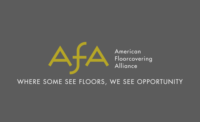INSTALL Showcases ICRA Standards at 2019 Medical Association Expo

Washington, D.C. -- According to the Centers for Disease Control and Prevention (CDC), 1.7 million healthcare-associated infections (HAIs) occur each year in the U.S., contributing to nearly 100,000 deaths. On any given day, roughly one in 25 hospital patients has an HAI, endangering lives and costing the U.S. healthcare system billions of dollars per year. While the connection between the HAI epidemic and the construction industry may not seem apparent, the relationship between the two may be closer than one might think.
HAIs can be caused by construction-related activity, most of which are preventable with strict adherence to specific protocols. As HAIs continue to affect patients, the industry has a responsibility to understand how construction-related contaminants such as dust and mold affect occupied facilities and what they can do to help prevent HAIs in the first place.
The Carpenters International Training Fund, the United Brotherhood of Carpenters and Joiners of America (UBC), together with INSTALL continues to lead the industry in new Infection Control Risk Assessment (ICRA),protocols and procedures. To demonstrate their commitment to educating infection preventionists and the construction industry on the benefits of specifying ICRA protocol during work or renovation in a healthcare environment, a mock hospital exhibit was recently held at the 2019 Association for Professionals in Infection Control and Epidemiology (APIC) Conference in Philadelphia.
Members of the UBC decided to create the demonstration based off its mobile application designed to educate contractors and installers on the importance of following ICRA protocol. Similar to the app, the mock hospital guided attendees through 10 side-by-side stations of installers following ICRA standards and installers who were not, highlighting the benefits of following the proper procedure when in healthcare environments.
Rick Okraszewski, ICRA director for the Keystone Mountain Lakes Regional Council of Carpenters, has participated with the (CITF) at APIC for the past five years. The CITF, located in Las Vegas includes a mock healthcare training system to educate all members who go through training at the UBC’s flagship training center, the Carpenters International Training Center (ITC). Okraszewski, seeing the need to also educate healthcare professionals of the importance of ICRA, decided to bring the ITC ICRA training on the road to APIC.“We created an environment with multiple things going wrong in multiple ways. Each demonstration showed what was wrong and how the proper procedure should be carried out,” explained Okraszewski. “Although the CITF allows members to actually practice with ICRA in mind, this demonstration showed healthcare professionals all the red flags to look for in their own healthcare facility.”
The mock hospital was a huge success at the show, with nearly half of all conference attendees walking through the simulation. The UBC had 20 volunteers acting in the demonstration, which added to the attraction. The demonstration is yet another facet of INSTALL, the CITF, and UBC’s commitment to educating its members on lifesaving ICRA protocols. This commitment also includes in-depth trainings, certification and continuing education courses.
“INSTALL, the CITF and the UBC understand the importance of educating members on finishing a job the right way the first time,” said John T McGrath, executive director of INSTALL. “Whether or not a contractor follows these procedures in a healthcare environment is crucial to the safety of the patients.”
It is equally as important for the healthcare professionals hiring installers to know ICRA standards, so that they are specifying the right talent to complete the job successfully and safely. That is why Okraszewski plans to return to APIC next year. INSTALL, the CITF and the UBC hope that demonstrations like the one held at APIC drives expectations forward for healthcare professionals, contractors, and installers working in these fragile environments.
For more information, visit installfloors.org.
Looking for a reprint of this article?
From high-res PDFs to custom plaques, order your copy today!






